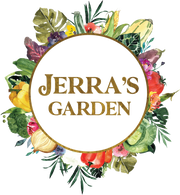As the garden transitions into fall, attracting pollinators becomes even more important. Flowers not only beautify, but they also support bees, butterflies, hummingbirds, and beneficial insects. In Florida’s climate, you need plants that bloom in heat and humidity while offering nectar, pollen, and habitat.

Blue Sage Flowers
Why Pollinator Plants Matter in Fall
-
Many pollinators slow activity in cooler months. A bloom supply in fall helps maintain their populations.
-
Flowers draw predatory insects (e.g. parasitic wasps, ladybugs) that help control pests.
-
A healthy pollinator network improves fruit and vegetable set in your garden in future seasons.
Top Pollinator-Friendly Flowers for Florida Fall
Here are reliable, heat-tolerant bloomers that perform well in Florida’s fall conditions:
| Flower / Plant | Benefits | Notes & Care Tips |
|---|---|---|
| Lantana | Long bloom period, attracts butterflies and bees | Prune lightly to encourage new growth; tolerate heat well |
| Salvia / Sage varieties | Nectar-rich for bees and hummingbirds | Use deadheading to prolong blooms |
| Zinnias | Bright, easy, fast to flower | Sow successively; avoid overhead watering |
| Cosmos | Feather-foliaged, drought tolerant, pollinator magnet | Thin seedlings, pinch tips early |
| Sunflowers | Good height, showy, seeds attract birds too | Choose smaller varieties for garden beds |
| Gaillardia (Blanket Flower) | Tolerates heat, attracts pollinators, long bloom | Deadhead & give full sun |
| Salpiglossis & Torenia (shade-tolerant options) | Works well under partial shade or filtered sun | Great for border/interior planting |
| Coreopsis | Native to Florida, hardy in heat | Deadhead spent blooms to extend life |
| Black-eyed Susan (Rudbeckia) | Attracts bees and butterflies | Cut back after first wave to promote second bloom |
| Penstemon (tropical species) | Good nectar source in warmer months | Provide well-drained soil |
Tips for Planning a Pollinator-Friendly Fall Garden
-
Plant in clusters or drifts — grouping 4–6 of the same species helps pollinators find them.
-
Use succession planting to extend your bloom season—plant deadheading and reseeding.
-
Mix flower heights to provide structure and varied habitat (low, mid, tall).
-
Maintain continuous bloom — always have something flowering from early fall into winter.
-
Avoid broad-spectrum insecticides—use targeted, natural insect control only.
-
Provide water sources (shallow dishes with stones) or damp soil spots for pollinators.
Fall in Florida offers a unique opportunity: many gardeners pause planting, but your flower beds can still shine—and serve an important ecological role. Choose blooms that thrive in heat, plant thoughtfully, and be a sanctuary for pollinators right when they need food.
Check out seeds or plants for many of the flowers mentioned on Jerra’s Garden Seed & Plant Shop—perfect to plant now and support your garden’s health.


